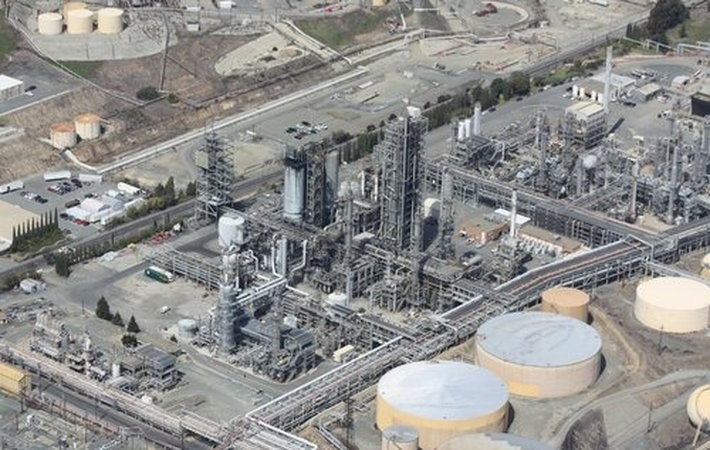
Published on 12/19/2016 | Strategy
In the preceding sections, I touched upon a few use cases briefly. In this section, I shall mention a few use-case classes that are relevant for the hydrocarbon industry in particular, and other adjacent industries such as Manufacturing, Metals & Mining, Cement, F&B, Chemical, etc.
A large and complex refinery, let's say 250,000 Barrels/stream day, may process more than 50-60 types of crude oil and produce many different products. Presumably, it would have a daily operating cost to the tune of US$ 2.0 - 3.0 Million (excluding crude cost) depending the crude oil price (as energy cost depends on crude oil cost). The variations in the crude used and the various products produced may lead to various process unknowns or uncertainties, such as, variation in yield under apparent similar conditions, variations in energy and utility consumption, unpredictable machine behavior, etc. These may leave open a great amount of LPOs. With the wealth of data that is available in most refineries (data from historians and various databases), sophisticated algorithms can be leveraged to find out hidden correlations and provide answer to questions such as "How can we maximize X yield and minimize Y?"
Petroleum refining is an extremely energy intensive process having about 60-70% of non-crude costs associated with it. It takes about 3.6 Million KWh of energy just for atmospheric distillation of 280,000 barrels of crude oil (API 35-40). The inaccuracies involved the estimation of ideal energy requirements due to the uncertainty of operating conditions and engineering complexities, coupled with the impracticality of monitoring every leak and every fouling, can lead to massive losses. Big Data can play a major role in improving energy efficiency here, and that too without any CAPEX on plant modification. Analysis of the data can shed light on the influence of process parameters, equipment design, equipment age/condition, operating practices and maintenance practices on Energy consumption. Just to give you an idea about the kind of money we're talking about here - a 1% improvement in Energy Efficiency in a 300,000 BPD Refinery can result in annual savings of US$ 2.5 - 8 Million depending on crude oil price. A 1 Degree Celsius reduction in temperature at energy hotspots could save more than US$500,000 annually.
Maintenance in a refinery typically accounts for approximately 20% of Non-crude operations cost. Downtime of critical equipment can result in daily losses amounting to millions, and as things stand, most responses or interventions are based on post facto or lagging metrics. So how can data play a role here? “Healthy” operational equipment is essential for business continuity, and unpredictable machine behavior may leave open a great amount of undesirable LPOs. Refineries have a massive wealth of data from historians and various databases. Flutura can look into them through sophisticated algorithms to find out the hidden co-relations and provide answer to critical questions such as "What is the current health of equipment X? Is there a possibility of it malfunctioning in next 15 days or before the next turn around? Do I need to perform maintenance before the scheduled date, or could I possibly avoid the next scheduled maintenance and allocate my resources where they are most needed?”
Oil & gas supply chain generates millions of data points as decisions affecting sustainability, stability, and short term profitability are taken. The variables involved such as market movement and regulations, etc. also add to the myriad of data points that are already available. The industry has always had large transactional systems to capture all these data points, however, these systems have hit a plateau. With increasing risks, market volatility and rougher conditions, data interpretation has to go to the next level to allow for real-time data driven decision making. Big Data technologies can significantly reduce dependence on assumptions (which can presumably translate into risks) that are involved in the current decision making process (position risk, Value at risk, possible impact of planned shutdowns in the regional refineries on the price of products, etc.), and drastically improve forecasting capabilities, as well as optimize key combinatory factors such as the right supplier, quality & quantity of products, and logistics.
In Part 5, we will take a look at a couple of examples that are applicable to other players in the hydrocarbon value chain such as OEMs & oil field service providers.
Thank you for your time.
This article was originally posted on LinkedIn.
Oil & gas supply chain generates millions of data points as decisions affecting sustainability, stability, and short term profitability are taken. The variables involved such as market movement and regulations, etc. also add to the myriad of data points that are already available. The industry has always had large transactional systems to capture all these data points, however, these systems have hit a plateau. With increasing risks, market volatility and rougher conditions, data interpretation has to go to the next level to allow for real-time data driven decision making. Big Data technologies can significantly reduce dependence on assumptions (which can presumably translate into risks) that are involved in the current decision making process (position risk, Value at risk, possible impact of planned shutdowns in the regional refineries on the price of products, etc.), and drastically improve forecasting capabilities, as well as optimize key combinatory factors such as the right supplier, quality & quantity of products, and logistics.
In Part 5, we will take a look at a couple of examples that are applicable to other players in the hydrocarbon value chain such as OEMs & oil field service providers.
Thank you for your time.
This article was originally posted on LinkedIn.